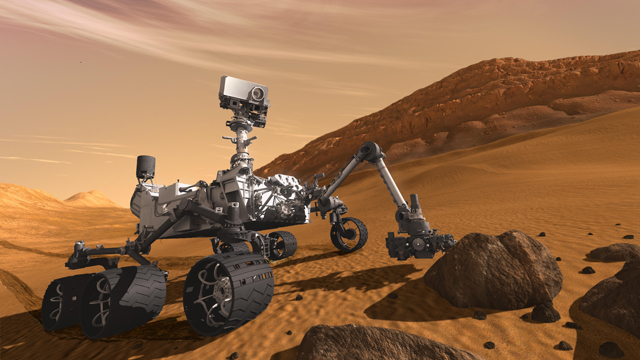
We've been thinking about life on Mars for a long, long time.
At first it was easy. Before the telescope, Mars was a brilliant spark of orange light that moved about the sky with the other planets, seemingly with a life of its own. Its light grew and faded as its distance changed, and it would routinely reverse its course through the stars in retrograde ebbs. Long ago, many cultures saw Mars, and the other visible planets, as living beings themselves: deities that journeyed through the heavens.
After the invention of the telescope, and especially in the late 19th-century when they got powerful enough to see some details on Mars' face, it was still pretty easy to think about Mars and life, though life on Mars, and not Mars as a living being, was the main fare for the imagination. Polar ice caps reminiscent of Earth's and perceptible surface markings and color variations, both of which changed in extent and detail with Martian seasons, seemed to make Mars—or the human imagination—pulse with life. Fiction writers and scientists alike speculated on the existence of vegetation, animal life, liquid water, and even intelligent civilizations existent on the Red Planet.
But as our telescopes grew even more powerful, and especially when we started sending cameras and telescopes to Mars on robotic spacecraft, imagining Martian life became more challenging. Even the first robots to land on Mars only added to the sterile picture of a lifeless Mars. It seemed that the possibilities of finding life there were drying up like the dusty, rusty, desert planet itself.
Last week I heard a rumor, which many of you heard as well, that NASA is preparing to make a big announcement concerning Mars and a recent discovery by the SAM instrument on board the rover Curiosity. People have been asking, "What big announcement is NASA going to make? Will it really be earth-shaking, as some have suggested?"